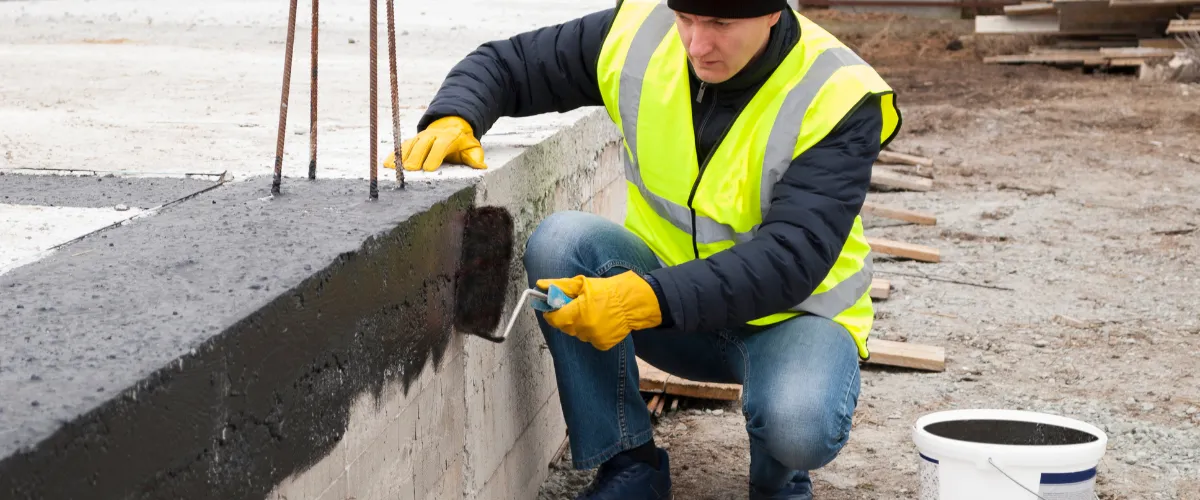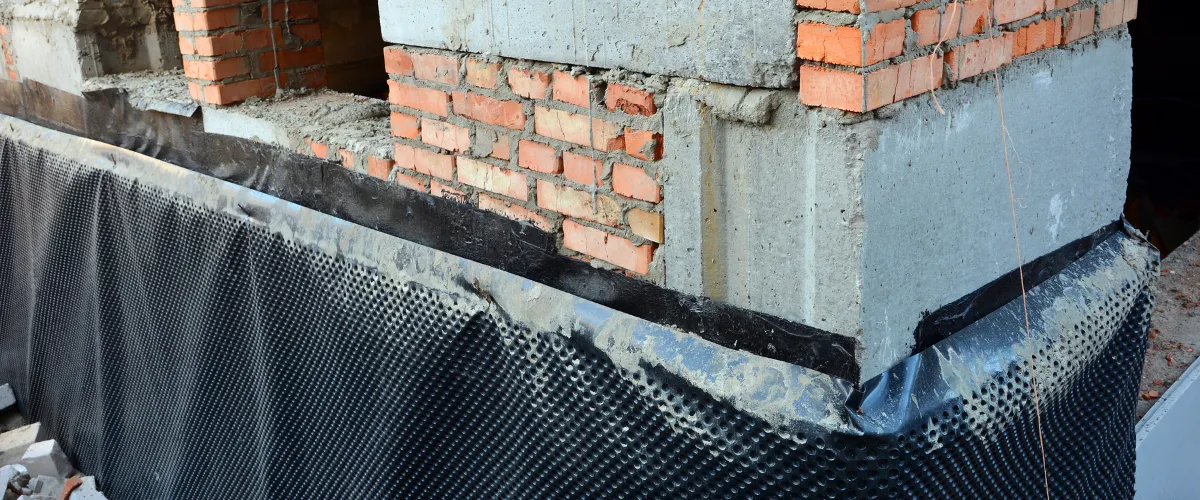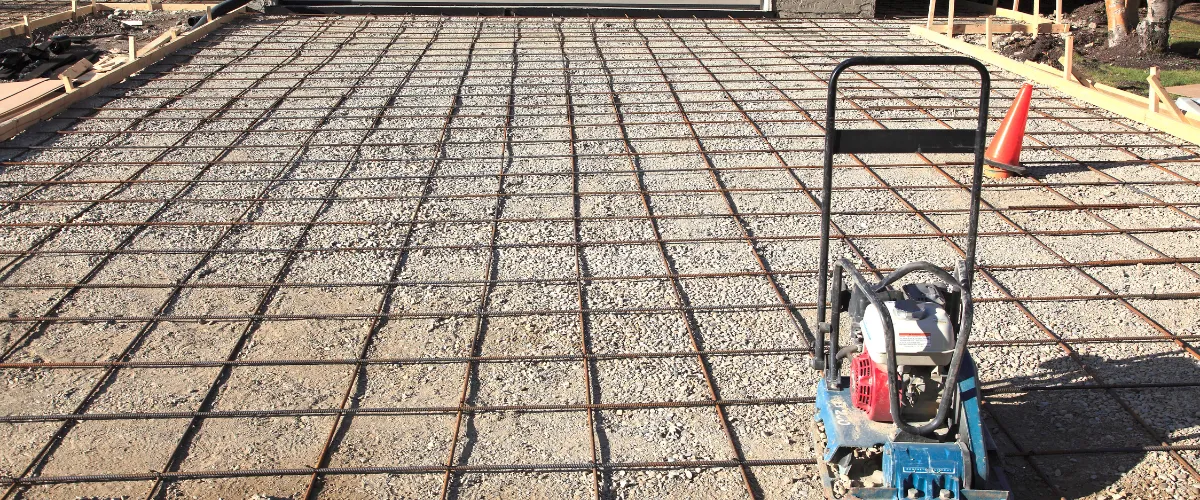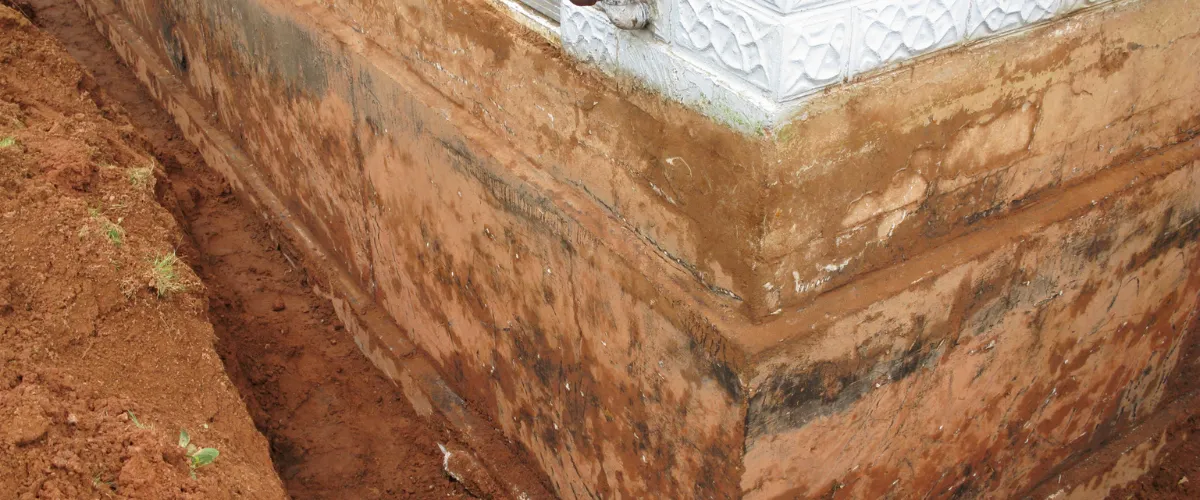Types Of Basement Foundations

Key takeaways
- Basement foundations are available in different types including full basement, daylight basement, crawl space, and slab-on-grade
- A full basement foundation goes deep into the ground, covering the entire area under a house.
- A daylight basement is a type of foundation is built partially underground but one side faces lower land.
- A crawl space creates a small gap between the soil and the home's floor.
- A slab-on-grade foundation consists of a single layer of concrete, poured directly onto the ground.
Overview of Basement Foundation Types
Full Basement
A full basement foundation goes deep into the ground, covering the entire area under a house. Homes with this type of foundation can have more living or storage space. Walls are made from poured concrete or concrete blocks, making them strong against soil pressure and water.
This basement can be finished and turned into rooms like any other part of a house.
Full basements provide a solid base for homes, offering extra space and stability.
This kind also helps in keeping the house warm in winter and cool in summer.
It does so by being below ground level where temperatures stay more constant. People choose full basements for their strength and the potential to add square footage without expanding outward.

Daylight Basement
Moving from the traditional full basement, a daylight basement presents a unique alternative. This type of foundation is built partially underground but one side faces lower land. It lets in natural light and fresh air through windows on the exposed wall.
Many choose this design for living spaces or workshops because it feels less like a basement and more like part of the home.
Daylight basements work well on sloped lots, allowing direct access to the outside. They can be finished to create extra bedrooms, family rooms, or even rental units with separate entrances.
The blend of functionality and accessibility makes daylight basements popular among homeowners looking for added value without building an entirely new structure.
Crawl Space
Shifting from daylight basements, a crawl space is another foundation option to consider. Crawl spaces lift the house slightly off the ground. This creates a small gap between the soil and the home’s floor.
It allows for air circulation under the house. This airflow can help keep moisture levels down.
Crawl space foundations use less material than full basements or slabs. They often involve pouring concrete footings with masonry walls supporting above-ground structure. For areas prone to floods, this can be ideal because it raises critical parts of your home above potential water damage levels.
Houses with crawl spaces also have easier access to plumbing and wiring for repairs or upgrades compared to slab-on-grade foundations.
Slab-on-Grade
A slab-on-grade foundation consists of a single layer of concrete, poured directly onto the ground.
This design often requires less labor and materials than other types, making it an economical choice for homeowners. Moreover, the absence of a deep excavation reduces construction time and minimizes disturbance to the surrounding landscape.
Slab-on-grade foundations are also known for their energy efficiency as they allow for easy installation of radiant heating systems which can help in lowering heating costs during colder months.
Slab-on-grade foundations are a budget-friendly option that provides efficient thermal mass, reducing overall building energy consumption.
Key Benefits of Different Basement Foundations
- Enhanced Structural Stability
Different basement foundation types offer varying levels of structural stability. Full basements, constructed with poured concrete walls, provide strong support for the entire structure.
Daylight basements, also made from poured concrete or precast slabs, help distribute the building’s weight evenly and resist wall cracks often seen in other foundations. Crawl space and slab-on-grade foundations can be enhanced with steel bars or insulated concrete forms (ICF) to improve their stability.
Moreover, soil conditions play a crucial role in determining the stability of a foundation. For instance, homes built on compacted soils typically have more stable foundations than those constructed on expansive clay or loose sandy soils.
It is important for homeowners to consider these factors when choosing a basement foundation type to ensure long-term structural integrity and safety of their homes.
- Additional Storage or Living Space
Different basement foundations offer various advantages. A full basement provides extensive storage space and can be finished for additional living areas, increasing a home’s square footage.
Daylight basements have windows and exterior doors, allowing them to be used as separate living spaces or rental units. Crawl spaces provide limited storage but are suitable for housing HVAC systems and plumbing.
Slab-on-grade foundations do not offer extra storage space due to the lack of a basement, but they are more affordable to build.
A full basement foundation allows homeowners to store seasonal items, exercise equipment, or create recreational rooms like home theaters or playrooms. Daylight basements can serve as guest bedrooms, in-law suites, or even private rental apartments with easy access from outside.
On the other hand, crawl spaces are ideal for storing infrequently used items like holiday decorations and spare furniture pieces. In contrast, slab-on-grade foundations prioritize affordability over providing additional indoor storage space.
- Potential for Lower Heating Costs
Different basement foundation types affect heating costs. A full basement helps insulate the home, potentially lowering heating expenses by roughly 10-15% annually, especially in colder climates.
Daylight basements and slab-on-grade foundations can also aid in temperature regulation, contributing to reduced heating bills.
Insulating water pipes in crawl space and slab foundations can prevent heat loss, further decreasing energy consumption. Properly insulated walls and floors maximize energy efficiency throughout different seasons.
Understanding these factors supports homeowners in making informed decisions when choosing a basement foundation type for cost-effective heating benefits.

Considerations When Choosing a Basement Foundation
- Local Climate and Soil Type
Choose a basement foundation that suits your local climate and soil. The type of soil affects the stability and performance of the foundation. For example, clay-rich soil can expand or contract with moisture changes, potentially causing damage to the foundation walls over time.
It’s important to consider if you live in an area prone to heavy rainfall, freezing temperatures, or high winds. Certain foundations like full basements may offer better protection against extreme weather conditions compared to slab-on-grade foundations.
In areas with expansive soils or high water tables, pier and beam foundations might be more suitable as they can help mitigate potential issues caused by these soil types. Understanding your local climate and soil type is crucial for ensuring the longevity and structural integrity of your home’s foundation.
- Building's Structural Requirements
A considerable aspect when choosing a basement foundation is the building’s structural requirements. This refers to how sturdy and stable your house needs to be from the ground up.
Factors that influence this decision include local climate, soil type, and the overall construction of your home. For instance, if you’re in an area with unstable or expansive soil, it might require a stronger foundation like a full basement or reinforced slab-on-grade to ensure structural stability against shifting or settling.
Similarly, homes in regions prone to extreme weather conditions such as hurricanes or earthquakes need foundations designed to withstand these forces.
It’s also essential to consider what material will best meet these requirements based on your specific location and environmental factors. Some options may be more suitable than others depending on whether you live in a cold climate with freeze-thaw cycles or an area with high groundwater levels where moisture control is critical for preventing damage over time.
- Budget and Long-term Maintenance Costs
When considering a basement foundation, it’s essential to factor in the long-term expenses. While full basements may offer more space, they can be costlier due to excavation and construction for larger foundations.
Crawl spaces may be initially cheaper, but potential moisture issues could lead to long-term maintenance and repair costs. Slab-on-grade foundations, however, tend to have lower initial expenses and reduced risks of water-related damage over time because they lack basement walls prone to cracks or leaks.
It’s advisable for homeowners to also consider their local climate and soil type, as regions with expansive soils might entail additional maintenance for certain foundation types due to shifting ground conditions.
Homeowners should budget not only for the initial installation of their chosen foundation but also consider long-term upkeep based on their specific location and building needs.

Top Basement Foundation Manufacturers
Known for innovative precast concrete solutions offering reliable and energy-efficient basement foundation products.
Specializes in waterproofing and finishing solutions ensuring dry, functional basements for homeowners.
Provides industry-leading insulated concrete forms designed for energy efficiency and strength in residential foundations.
Logix Insulated Concrete Forms
Delivers high-quality ICFs that promote thermal efficiency and structural integrity throughout all seasons.
Expertise You Can Trust
Our team has been providing exceptional basement remodeling services for years, ensuring professional results that save you money in the long run. Ready to tackle your project with industry experts? Contact us if you live in Missouri at (816) 200-7741 to get started.
